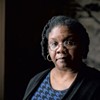Published December 21, 2005 at 12:57 p.m.
With recreational reading out of fashion among teens, there's been a lot of talk about improving "young adult" fiction. That semi-amorphous category of literature aimed at the 11 to 17 crowd doesn't have to be juvenile -- most adult bookworms can recall at least one YA fave.
Nonetheless, critics complain that YA fiction has been dumbed down since the days when Harriet the Spy snuck into dumbwaiters with her trusty notebook. In an article in the online magazine Slate last July, Ann Hulbert surveyed these critiques in a round-up story about the genre. Most of them blasted fluffy teen lit such as the Gossip Girls series -- basically, scandalous WB soaps in book form.
Hulbert herself has scathing words for a more prestigious YA genre, "problem" fiction, which attempts to introduce kids to difficult issues but too often does so in the lead-footed "ABC Afterschool Special" fashion. Many of these "issue" books are taught in schools, but are they any more educational than the fluff? "Reared on a regimen of earnest YA fare through middle school," Hulbert writes, ". . . kids are well-trained to discuss timely topics, like terrorism or juvenile delinquency . . . They learn to look for themes that are right on the surface . . . They are instructed to spot trite symbols . . . They are asked to probe two-dimensional characters."
But some offerings from local authors suggest that modern YA fiction isn't the intellectual desert these critics imply it is -- nor does it always have to be a well-intentioned snooze.
Introducing... Sasha Abramowitz is the first YA book by Sue Halpern, a Ripton adult novelist and freelance journalist who publishes in The New York Review of Books and The New Yorker. It's easy to classify as a "problem" novel. As 11-year-old Sasha herself says early on, "I have a brother and he has 'problems.'" Moreover, those "problems" turn out to revolve around the oh-so-trendy Tourette syndrome. When Sasha was 8, we learn, her older brother Danny's quirks and compulsive swearing blossomed into a scary breakdown in the family swimming pool. Ever since, he's attended a "special school" in the Berkshires. Sasha lives on the campus of Krieger College with her professor parents, who make her see a therapist she calls the Eraser. She explains the nickname: "He always wants to talk about my feelings, as if by talking about them they'll go away or something."
As the sly irony of that passage suggests, Sasha is no two-dimensional character. Nor are the "problems" the novel raises -- for the most part -- easily solved. And there are a lot of problems besides the Abramo- witzs' fractured family. Andrew Hardy, a student baseball player and ace magician whom Sasha befriends, falls suddenly and mysteriously ill. Sasha's teacher has to leave school for months in order to adopt a baby from Guatemala. One of her classmates has deaf parents who can't hear him act in the school play. And the college's baseball team, the Krieger Cats, has never won a single game -- much to the dismay of Sasha's dad, whom she calls the "distinguished professor of baseball poetry."
With all the "issues" it raises, Sasha Abramowitz occasionally does verge on "Afterschool Special" territory. Pop culture -- even the Internet -- is conspicuously absent from Sasha's life, and there are moments when one gets the sense that Halpern is using her precocious narrator to educate the reader. "Have you ever read Great Expectations?" Sasha gushes. "If you haven't, you should."
Despite moments of didacticism, though, Sasha's narrative seems likely to pass the kid test -- it's brisk, freewheeling, eventful and uncensored. Like her role model, Harriet the Spy, Sasha calls it as she sees it when observing the adult world. In one memorable digression, she analyzes the magical thinking of diehard Red Sox fans.
Halpern doesn't sentimentalize Tourette syndrome or sugarcoat Sasha's frustration and anger at her brother for turning family life into a place where "Anything could happen." The novel's simple, sensible lessons on dealing with "problems" are woven unobtrusively into the narrative, as when the boy with deaf parents tells Sasha that he knows it's okay for his family to be different, but "being okay is not the same thing as being easy."
Sasha Abramowitz is a "problem" novel that turns out to be more entertaining than that label might suggest. M or F? is the opposite: a YA novel that starts fluffy and ends up being a fairly substantial meal.
Coauthored by Chris Tebbetts of Hinesburg and Massachusetts writer Lisa Papademetriou, M or F? is clearly aimed at older readers than Sasha. Set in a suburban Chicago high school, it embraces pop culture to the same degree that Halpern's novel abjures it. The snarky dialogue between best friends Frannie and Marcus could be lifted straight from one of the smarter teen-oriented TV shows. They refer to an unconvincing rawker chick as "Goth in a Box" and tell each other things like "You're big smitten, aren't you?" Phrases such as "convo," "irony meter," and "on the double DL" fly fast and furious as the principals tell their sides of the story in alternating chapters.
That story is basically Cyrano de Bergerac in cyberspace. Frannie's straight and Marcus is gay, but neither has ever had a real boyfriend. When Frannie develops a crush on Jeffrey, who has dreamy blue eyes and writes poetry, Marcus encourages her to "go for it," wishing he had as many options. ("Roaring Brook High School wasn't exactly crawling with out and eligible gay boys," he laments.) Frannie gets go-ahead signals from Jeffrey, first in the school chatroom and then in person. Only problem is, their conversations, whether online or face to face, just don't have "flow." That's where Marcus steps in. Assuming Frannie's online identity -- first with her connivance, then behind her back -- he develops the easy, flirty rapport with Jeffrey that Frannie can't seem to elicit on her own.
Like all deception-based love triangles in all high-concept romantic comedies ever written, this one is obviously headed for serious fall-out, further complicated by the sexual orientation issue. But the authors have built a few more twists into their romantic maze than one might expect. The characters are individuals, not teen-movie stereotypes. Perfect on paper, Jeffrey can be a bit of a bore: "He only ate things that were (a) vegetables and (b) not hurting Tibet." And some of the novel's insights will hit home with adults as well as teens. Like many women, Frannie wishes she could have as much fun with her dream guy as she does watching Bollywood movies with her gay best friend. Meanwhile, Marcus wonders about his online masquerades, "What did that say about me, if I felt like my own best self when I was pretending to be someone else?"
Both these novels manage to get a message across without the heavy-handedness that Hulbert decries in YA fiction.
Looking for Lucy Buick doesn't quite manage to strike that balance. But it does draw great charm from its deftcombination of the real and the fantastic.
Award-winning Calais author Rita Murphy's novel starts as a modern version of the classic fairy tales about foundlings. The heroine is discovered as an infant inside a 1968 Buick Skylark convertible won in a poker game by stocking-factory magnate Rocco Sandoni. She's adopted into the "Sandoni clan" -- five fussy, nurturing old women and three childless "uncles" who soon start behaving like wicked stepfathers, plotting to marry Lucy off for money. Within the first few pages, the Sandoni women expire, only to return in spectral form as Lucy's busybody guardian angels. A freak accident -- one of several out-of-the-blue events in the plot -- frees 17-year-old Lucy from the male Sandonis' grip and gives her a chance to do what people in this type of book invariably want to do: find her real family. With nothing concrete to go on, she envisions her birth-parents as "the Buicks" -- "strong, big-boned people with shiny teeth and deep, gravelly voices."
The rest of the book is like that description: beautifully crafted and heavy on the whimsy. Lucy's favorite Sandoni great-aunt has taught her to follow signs such as "the pattern of oak leaves on the sidewalk in early autumn," which she calls "messages from a strange and benevolent universe." The signs lead Lucy onto a train going west, then to a small Iowa town where she meets a motley cast of characters: a five-times widowed woman who runs a motor lodge, an old Japanese man who spends his time hatching the cocoons of monarch butterflies, a handsome professional storm chaser.
Like the novels Hulbert mocks, Lucy Buick features some pretty obvious symbols -- butterflies represent freedom, storms represent emotional crisis -- and a theme that's hard to miss: a "real" family is the people who love you. For young fans of magical realism, the novel's poetic prose may make up for its thematic simplicity.
Still, signs and portents play a central role in moving the plot along, and this creates a dilemma for the reader. If we don't accept Lucy's belief that the world is a tapestry of meaningful symbols, we're likely to find her behavior bizarre and juvenile. Why does she expect to stumble on her birth family in Iowa, for example, when they abandoned her in New York?
On the other hand, if we do go along with the notion of benevolent fate, it's hard to see Lucy as an active character with the power to steer her own destiny. Although she says she wants to escape her "small suffocating self," we never really see her blossom as an individual, as opposed to a literary conceit. And that's a serious flaw, in a literary genre that's basically about finding and carving out one's own place in the world. Still, the novel's musical prose and memorable imagery may stick in young readers' heads, reminding them of the things books can do that TV can't.
More By This Author
Speaking of...
-

Video: Youths Compete in a Turkey Calling Contest in Castleton
Apr 21, 2022 -

Video: Students Sing and Dance in Shaina Taub’s ‘Twelfth Night’ in North Hero
Nov 5, 2020 -

Video: Young Activists Hold Black Lives Matter Vigil in Lyndonville
Jun 25, 2020 -

Video: VYCC Community Crew Builds Stairs at Schmanska Park
Aug 8, 2019 -

Video: 13th Annual Queer and Allied Youth Summit in Chester
May 23, 2019 - More »
Comments
Comments are closed.
From 2014-2020, Seven Days allowed readers to comment on all stories posted on our website. While we've appreciated the suggestions and insights, right now Seven Days is prioritizing our core mission — producing high-quality, responsible local journalism — over moderating online debates between readers.
To criticize, correct or praise our reporting, please send us a letter to the editor or send us a tip. We’ll check it out and report the results.
Online comments may return when we have better tech tools for managing them. Thanks for reading.













































